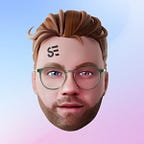Must read for UX designer in 2024
While blogs provide a lot of valuable and relevant information, books on UX design help you immerse yourself in the topic, generate new ideas, and implement something original in your projects.
In this article, I’ve collected books worth your time and attention.
Refactoring UI
Authors: Adam Wathan, Steve Schoger
This book is filled with practical and helpful information from the first page. The authors bring you up to speed immediately, describing the problem and providing good examples of design and solutions.
The book is perfectly structured. The chapters are short and logically complete. They can be read in any order.
One of the advantages of “Refactoring UI” is that the book has video tutorials. After all, some things are best learnt by watching an expert at work.
The lessons explain how to apply the information in the book to three common UI design scenarios:
- designing a complex-shaped interface;
- creating a data-centred dashboard;
- styling a text-based landing page.
Laws of UX: Using Psychology to Design Better Products & Services
Author: Jon Yablonski
Understanding user psychology is one of the most valuable skills for a UX designer. From this perspective, the book is valuable to me.
Yablonski introduces the ten laws of UX design, including the peak and end rule, Miller’s Law, and the von Restorf effect. You’ll also find clear examples of how to create human-centred and intuitive interfaces. This book helped me learn how to adapt design to how users perceive and process information.
The Path to Senior Product Designer: An Actionable Growth Plan for a UX Design Career
Author: Artiom Dashinsky
Knowing all Figma tools and experimenting with AI tools for design will not make your career. You need to develop other skills, such as presentation, coaching, quality feedback, motivation, and process improvement.
In this book, you will find a career development plan that will help you focus on the skills that are really important for a Senior Product Designer.
Rocket Surgery Made Easy: The Do-It-Yourself Guide to Finding and Fixing Usability Problems
Author: Steve Krug
This book is an excellent resource for improving usability testing skills. For beginners, it will help them learn the basics; for experienced designers, it will be a reference book that you can always go back to, a reminder of the obvious things we often forget about.
The book is written in a straightforward language. The only thing is that some programmes and tools included in it need to be more relevant. But you can easily find excellent replacements for them.
Interviewing Users: How to Uncover Compelling Insights
Author: Steve Portigal
This book is helpful for those who interview users regularly or do so infrequently that they need to remember the basics. This book is a must-read for UX designers, developers, and anyone who wants to talk to users. In the book, you will find techniques for interviewing and the interview plan itself, which helps turn it into a comfortable experience for both you and the users.
The book is written in a witty and engaging way. I boldly recommend it.
Sprint: How to Solve Big Problems and Test New Ideas in Just Five Days
Authors: Jake Knapp, John Zeratsky, Brad Kowitz
Sprint is an intensive five-day workshop format that develops new ideas and solves product problems. It uses various techniques, such as storyboarding and prototyping, with a primary focus on productivity. Sprints are good at helping you make decisions effectively and avoid risks.
The book will be useful for beginners and those who want to become Team Lead Designers. Its principles can easily be adapted to your sprints, which don’t have to be five-day sprints.
Building User Research Teams: How to create UX research teams that deliver impactful insights
Author: Steve Bromley
If you’re building a research team or want it to be more productive, check out this book.
It’s more suitable for beginners, so more experienced colleagues will find it too obvious. Overall, it’s a very decent step-by-step guide.
More TOP books
How can you mention UX design books on your CV or blog to advance your career?
Mentioning UX design books on your resume or portfolio blog can signal to your clients and employers that you are constantly improving in design.
Here are a few ways you can mention books on your resume:
- Education and self-education section: You can mention the books you have read about self-education in UX design. For example: The book “Designing Interfaces by Author Jennifer Tidwell.
- Skills and Competencies section: if the book helped you develop specific skills or competencies, you can mention them here. For example: Mastering the Habit-Forming Product Creation Model by Hooked: How to Build Habit-Forming Products by Nir Eyal.
By mentioning UX design books on your CV, you demonstrate your interest in the field, your commitment to self-development, and your willingness to continually learn. This can significantly increase your appeal to potential employers and help you advance your career.
